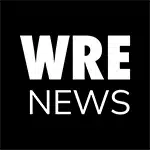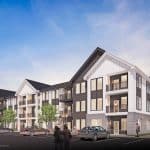Two new data reports are showing a decline in mortgage applications for new home purchases and the increased challenges in being able to afford a mortgage.
The Mortgage Bankers Association (MBA) reported mortgage applications for new home purchases decreased 6% year-over-year in January, the first annual decline in two years. On a month-over-month measurement, applications were up by 19%.
The average loan size for new homes increased from $400,930 in December to $403,416 in January. By product type, conventional loans composed 57.8% of loan applications, FHA loans accounted for 30.2%, VA loans had an 11.4% share and RHS/USDA loans composed 0.5%.
Joel Kan, MBA’s vice president and deputy chief economist, stated, “At an estimated annualized pace of 616,000 units, the new home market was subdued to start the year. The FHA share of new home financing continued to increase, accounting for a little more than 30% of applications, the highest share in the history of the survey. This increase is another silver lining in new home purchase activity, as a large proportion of FHA purchase loans go to first-time homebuyers.”
Separately, the National Association of Home Builders (NAHB)/Wells Fargo Cost of Housing Index (CHI) found a family earning the nation’s median income of $97,800 needed 38% of its income to cover the mortgage payment on a median-priced new home during the fourth quarter of 2024. Low-income families, defined as those earning only 50% of median income, would have to spend 76% of their earnings to pay for the same new home.
The NAHB data also determined that a typical family would have to pay 37% of their income for a median-priced existing home while a low-income family would need to pay 74% of their earnings to make the same mortgage payment. There was no change in the percentage of a family’s income needed to purchase a new home (38%) between the third and fourth quarters of 2024, but affordability did decline slightly for low-income families, rising from 75% to 76%.
“The latest CHI data clearly show there is an urgent need to tackle the nation’s housing affordability crisis,” said NAHB Chief Economist Robert Dietz. “In order to bend the rising cost curve and provide more affordable homeownership and rental housing opportunities for all Americans, policymakers must remove regulatory impediments and create a better business climate to allow builders to construct more attainable, affordable housing.”












